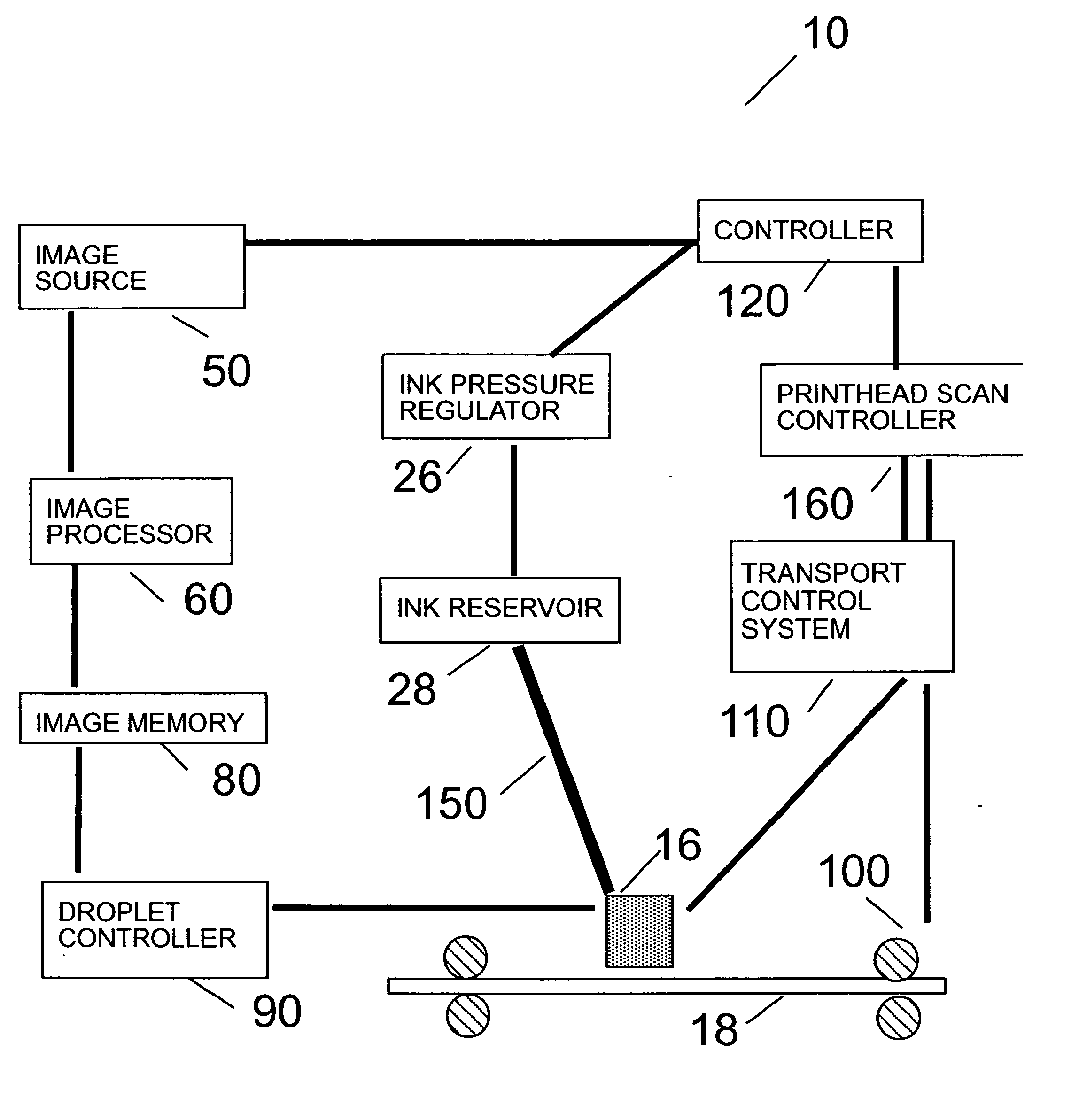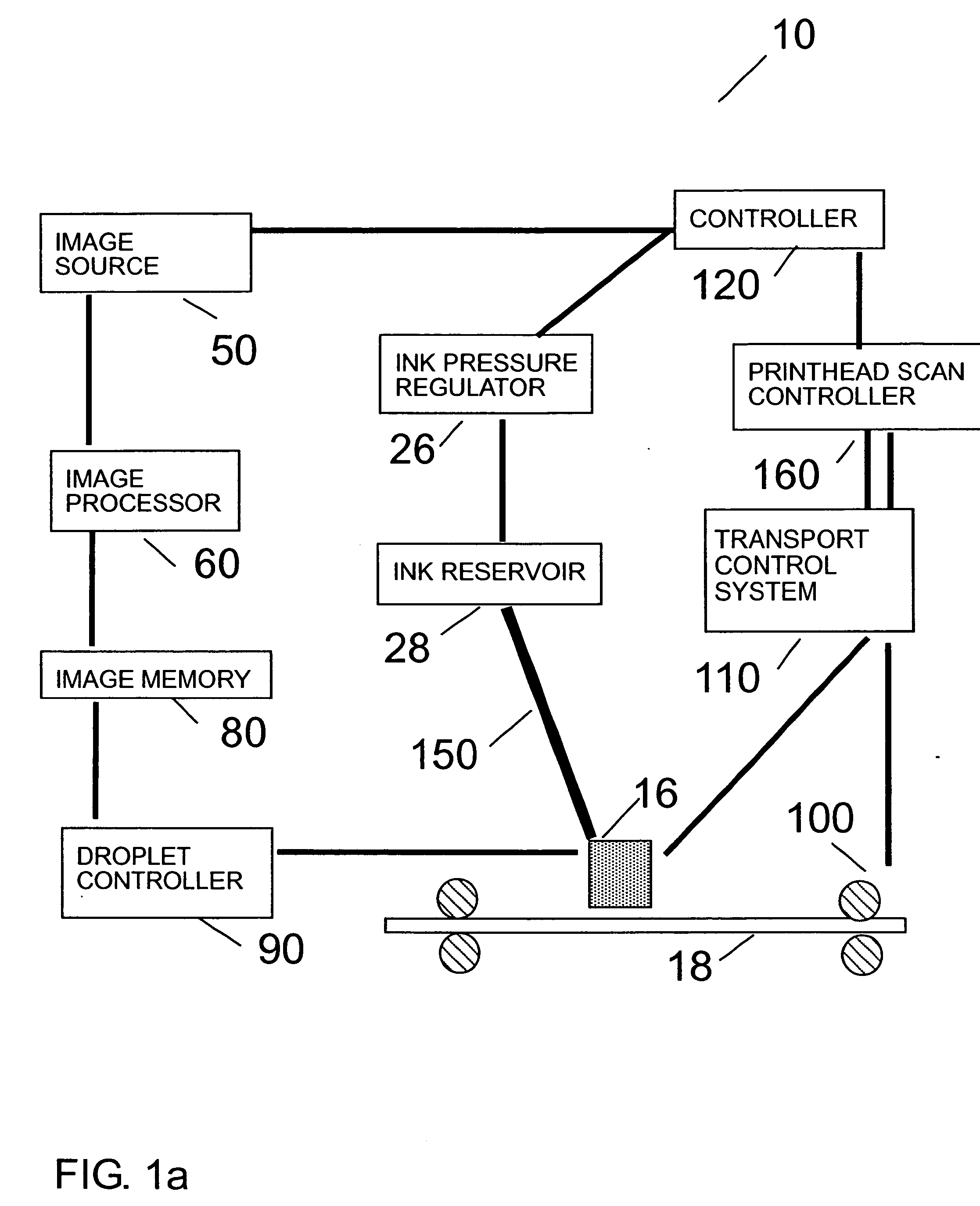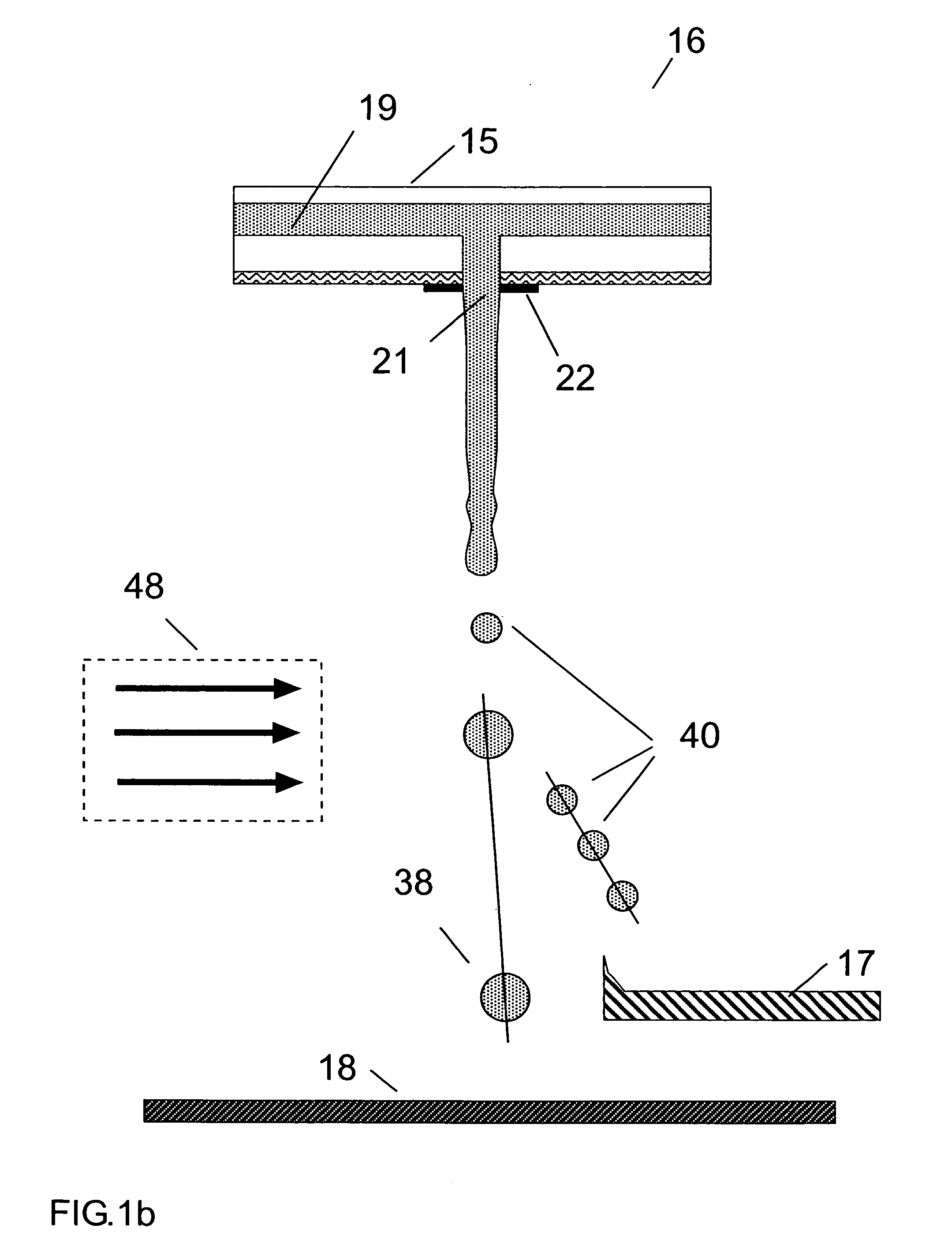Continuous inkjet printer having adjustable drop placement
- Summary
- Abstract
- Description
- Claims
- Application Information
AI Technical Summary
Benefits of technology
Problems solved by technology
Method used
Image
Examples
Embodiment Construction
[0060] The present description is directed in particular to elements forming part of, or cooperating more directly with, apparatus in accordance with the invention. It is to be understood that elements not specifically shown or described may take various forms well known to those skilled in the art.
[0061] Referring to FIG. 1a-1b, there is shown an imaging apparatus 10 capable of controlling the trajectory of fluid droplets according to the present invention. Imaging apparatus 10 accepts image data from an image source 50 and processes this data for a print head 16 in an image processor 60. Image processor 60, typically a Raster Image Processor (RIP) or other type of processor, converts the image data to a pixel-mapped page image for printing. During printing operation, a recording medium 18 is moved relative to print head 16 by means of a plurality of transport rollers 100, which are electronically controlled by a transport control system 110. A logic controller 120 provides contro...
PUM
 Login to View More
Login to View More Abstract
Description
Claims
Application Information
 Login to View More
Login to View More - R&D
- Intellectual Property
- Life Sciences
- Materials
- Tech Scout
- Unparalleled Data Quality
- Higher Quality Content
- 60% Fewer Hallucinations
Browse by: Latest US Patents, China's latest patents, Technical Efficacy Thesaurus, Application Domain, Technology Topic, Popular Technical Reports.
© 2025 PatSnap. All rights reserved.Legal|Privacy policy|Modern Slavery Act Transparency Statement|Sitemap|About US| Contact US: help@patsnap.com



